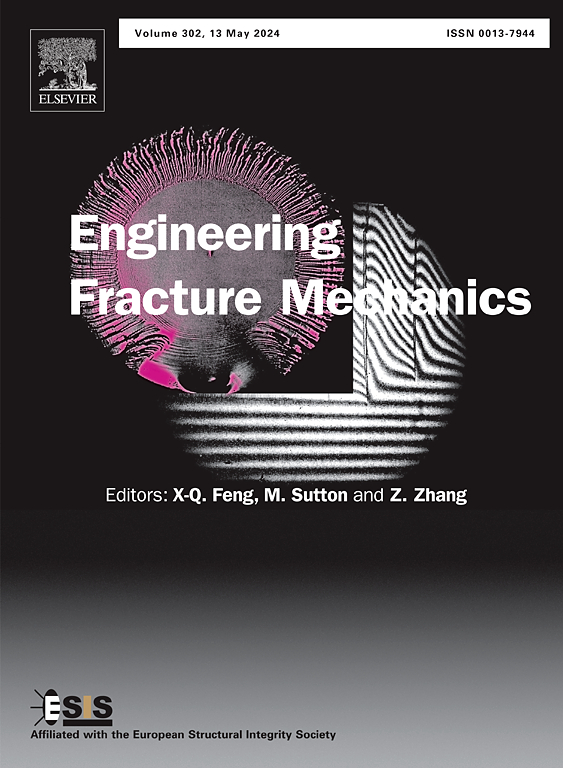Full-time domain rust expansion investigation and visual evaluation of reinforced concrete under synergistic protection
IF 4.7
2区 工程技术
Q1 MECHANICS
引用次数: 0
Abstract
Reinforced concrete undergoes corrosion-induced expansion in chloride environments. To enhance the chloride resistance of reinforced concrete and analyze the corrosion behavior before and after protection, The steel bar was treated with a γ-aminopropyltriethoxysilane (KH550) solution using molecular self-assembly and incorporated a cementitious capillary crystalline waterproofing material during concrete mixing. Electrochemical tests accelerated chloride erosion, while digital image correlation (DIC) technology continuously monitored strain and displacement fields on the specimen’s surface. X-ray CT provided a three-dimensional visualization and analysis of corrosion products. Scanning electron microscopy and X-ray energy spectroscopy revealed the microstructural degradation and failure mechanisms of the concrete under various protective measures. The study indicates that chloride-induced rebar corrosion generates expansive stresses that drive the integration, coherence, and propagation of cracks in the concrete protective layer. Both silane coupling agent molecular coatings and cementitious capillary crystalline waterproofing material effectively inhibit chloride-induced rebar corrosion and delay the development of corrosion-induced cracks. Combined use of self-assembly technology and cementitious capillary crystalline waterproofing material offers superior resistance to chloride erosion compared to single protective measures.
求助全文
约1分钟内获得全文
求助全文
来源期刊
CiteScore
8.70
自引率
13.00%
发文量
606
审稿时长
74 days
期刊介绍:
EFM covers a broad range of topics in fracture mechanics to be of interest and use to both researchers and practitioners. Contributions are welcome which address the fracture behavior of conventional engineering material systems as well as newly emerging material systems. Contributions on developments in the areas of mechanics and materials science strongly related to fracture mechanics are also welcome. Papers on fatigue are welcome if they treat the fatigue process using the methods of fracture mechanics.

 求助内容:
求助内容: 应助结果提醒方式:
应助结果提醒方式:


